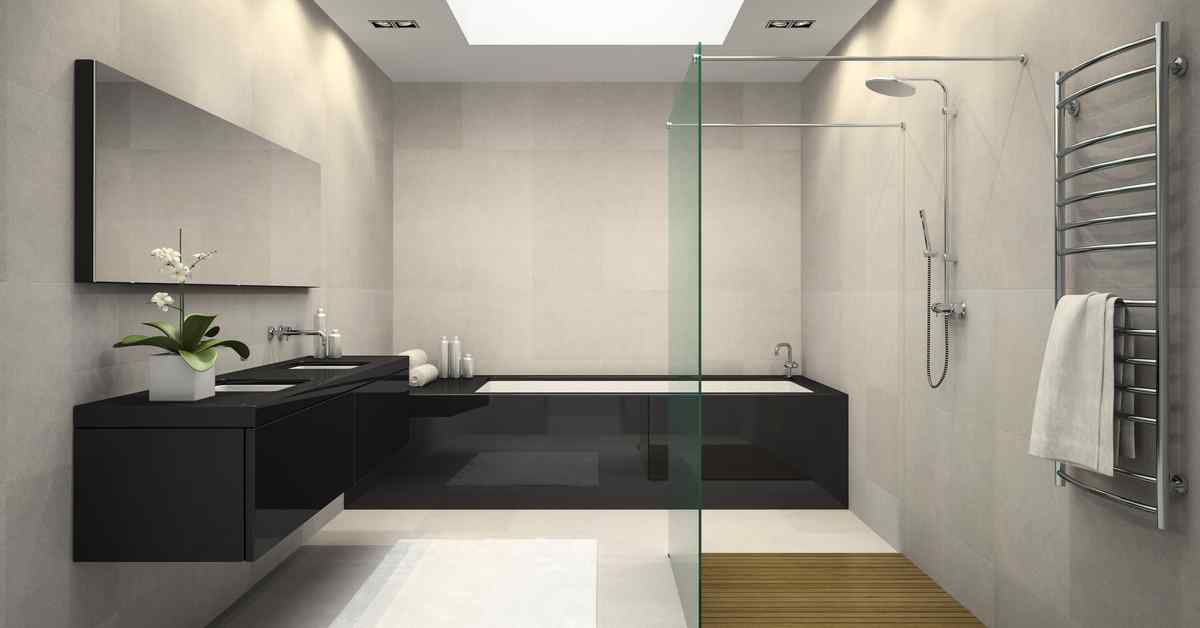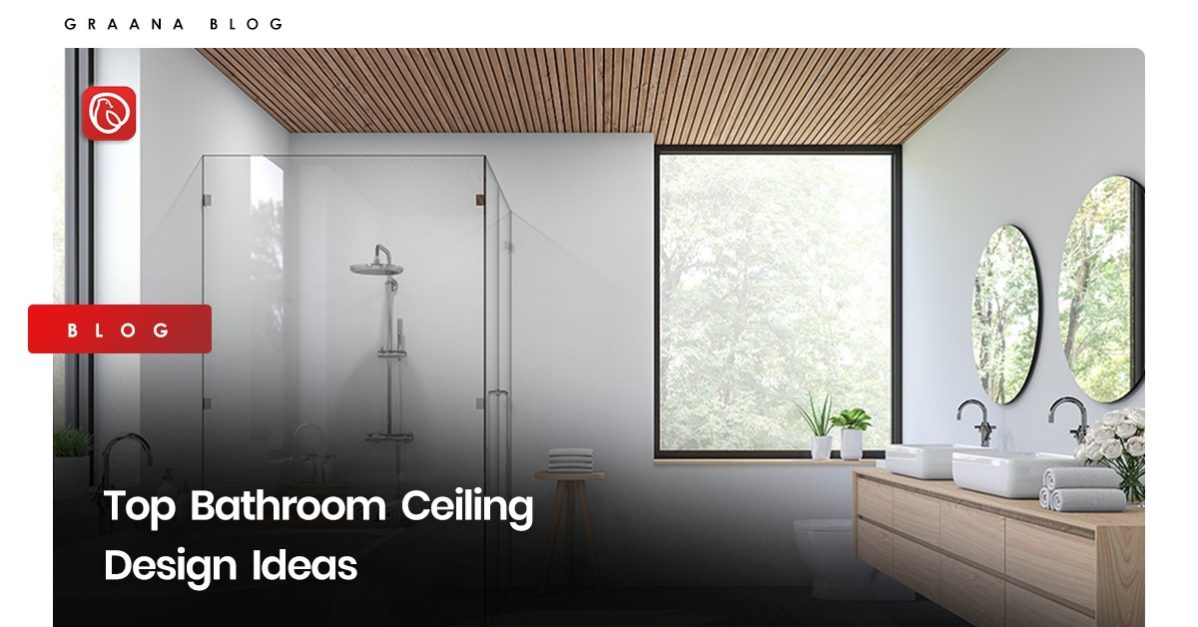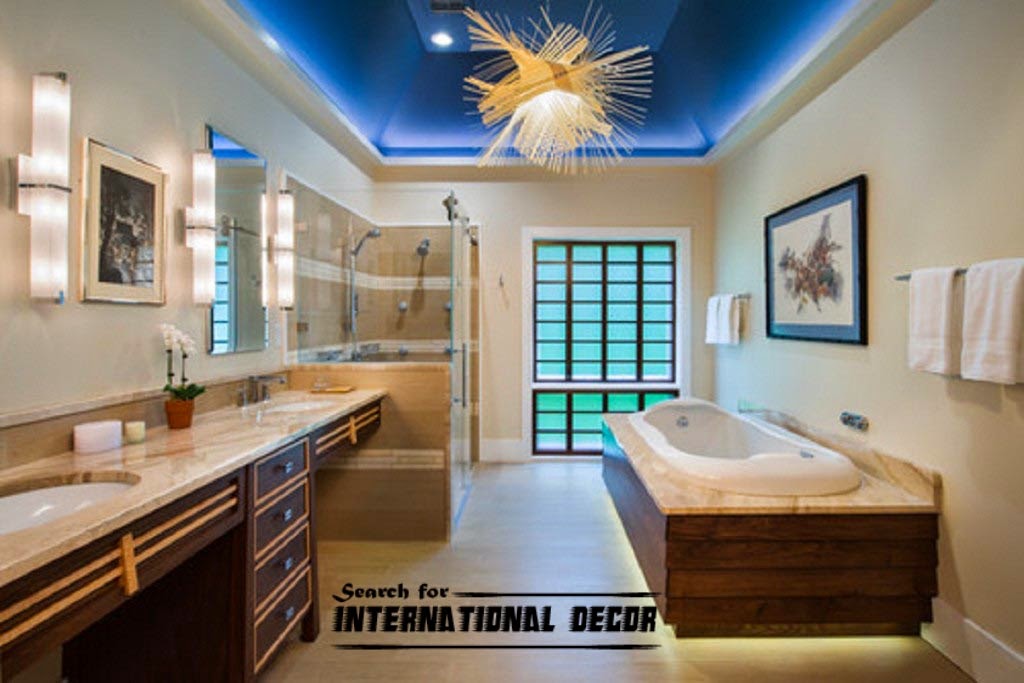Popular Pop Design Styles for Bathroom Ceilings: Pop Design For Bathroom Ceiling

Pop design for bathroom ceiling – Pop designs, also known as false ceilings, offer a versatile canvas for transforming bathroom ceilings into stylish and functional features. The latest trends in pop design prioritize functionality, aesthetics, and seamless integration with bathroom décor.
A pop design bathroom ceiling can be a fun way to add personality to your space. Consider incorporating bold colors, geometric patterns, or even a whimsical mural. If you’re working with brass fixtures that don’t quite fit the vibe, consider painting over brass bathroom fixtures to create a more cohesive look.
Once you’ve got the fixtures sorted, you can really let your creativity shine on that pop design ceiling!
Modern Pop Design Styles
Modern pop design emphasizes clean lines, minimalist aesthetics, and a focus on functionality. It often incorporates geometric shapes, sleek materials, and a muted color palette.
- Geometric Shapes: Modern pop designs frequently feature geometric shapes, such as squares, rectangles, or circles, to create visual interest and define space. These shapes can be incorporated into the ceiling panels themselves or used as accents in the form of recessed lighting fixtures or decorative moldings.
- Sleek Materials: Modern bathroom ceilings often feature materials like smooth, white gypsum boards, metallic finishes, or high-gloss paint. These materials reflect light, creating a sense of spaciousness and sophistication.
- Minimalist Color Palette: Modern pop designs typically employ a minimalist color palette, often relying on neutral tones like white, gray, or black. These colors provide a clean backdrop for other design elements and create a sense of calm and serenity.
Minimalist Pop Design Styles
Minimalist pop designs prioritize simplicity and functionality, creating a clean and uncluttered look. They often feature flat, smooth surfaces, minimal ornamentation, and a limited color palette.
- Flat, Smooth Surfaces: Minimalist pop designs often feature flat, smooth surfaces, minimizing any visual distractions. This creates a sense of spaciousness and tranquility.
- Minimal Ornamentation: Minimalist designs avoid excessive ornamentation or decorative elements. Instead, they focus on clean lines and simple shapes, allowing the architectural features of the ceiling to take center stage.
- Limited Color Palette: Minimalist pop designs typically employ a limited color palette, often relying on neutral tones like white, gray, or beige. These colors create a sense of calm and serenity, allowing other design elements to stand out.
Contemporary Pop Design Styles
Contemporary pop designs embrace modern trends while incorporating elements of traditional styles. They often feature a blend of textures, materials, and colors, creating a visually dynamic and sophisticated look.
Pop designs for bathroom ceilings can be a great way to add a touch of personality and style to your space. From bold geometric patterns to playful clouds, the possibilities are endless. When choosing a pop design, it’s important to consider the overall aesthetic of your bathroom and how the design will complement the other elements, such as your vanity.
Choosing the best paint color for your bathroom vanity can tie in beautifully with your pop ceiling design, creating a cohesive and stylish space. For instance, a bright, playful pop design on the ceiling might pair well with a bold vanity color, while a more subtle pop design might call for a more neutral vanity shade.
- Textured Surfaces: Contemporary pop designs often feature textured surfaces, such as wood paneling, faux wood, or metallic accents. These textures add visual interest and depth to the ceiling.
- Mixed Materials: Contemporary designs may incorporate a mix of materials, such as wood, metal, and glass, to create a unique and layered look. For example, a ceiling might feature wood paneling with metallic accents or glass light fixtures.
- Bold Color Choices: Contemporary pop designs often incorporate bold color choices, such as deep blues, greens, or even metallic finishes. These colors add a touch of personality and vibrancy to the bathroom.
Traditional Pop Design Styles, Pop design for bathroom ceiling
Traditional pop designs evoke a sense of classic elegance and sophistication. They often feature intricate moldings, decorative elements, and a warm color palette.
- Intricate Moldings: Traditional pop designs often feature intricate moldings, such as crown molding, cornice molding, or chair rail molding. These moldings add visual interest and define the space.
- Decorative Elements: Traditional designs may incorporate decorative elements, such as medallions, rosettes, or ceiling fans with ornate finishes. These elements add a touch of elegance and grandeur to the bathroom.
- Warm Color Palette: Traditional pop designs typically employ a warm color palette, often featuring shades of cream, beige, or brown. These colors create a sense of warmth and comfort.
| Pop Design Style | Key Features | Materials | Colors | Textures |
|---|---|---|---|---|
| Modern | Clean lines, minimalist aesthetics, geometric shapes, sleek materials, muted color palette | Gypsum board, metallic finishes, high-gloss paint | White, gray, black | Smooth, glossy |
| Minimalist | Simplicity, functionality, flat surfaces, minimal ornamentation, limited color palette | Gypsum board, smooth paint | White, gray, beige | Smooth, matte |
| Contemporary | Blend of textures, materials, and colors, visually dynamic | Wood paneling, faux wood, metallic accents, glass | Deep blues, greens, metallic finishes | Textured, layered |
| Traditional | Intricate moldings, decorative elements, warm color palette | Wood, plaster, decorative moldings | Cream, beige, brown | Ornate, textured |
Materials and Techniques for Pop Ceiling Design

Creating a stunning bathroom ceiling involves choosing the right materials and techniques to achieve both functionality and aesthetics. The POP ceiling, a popular choice, offers versatility in design and material options, enabling homeowners to create unique and personalized spaces.
Materials Used in Bathroom Pop Ceilings
The choice of material for your bathroom POP ceiling is crucial as it directly impacts durability, moisture resistance, and overall aesthetics. Several materials are commonly used, each offering distinct advantages and disadvantages.
- Gypsum Board: A widely used material for POP ceilings, gypsum board is known for its fire resistance, affordability, and ease of installation. It’s also readily available in various thicknesses and sizes. However, it’s susceptible to moisture damage and requires proper sealing and painting for protection in a humid bathroom environment.
- PVC Panels: PVC panels are highly moisture-resistant and durable, making them ideal for bathroom ceilings. They are lightweight, easy to install, and come in various colors and finishes, offering a wide range of design possibilities. However, PVC panels can be less sound-absorbing than other materials.
- Acoustic Tiles: Acoustic tiles are designed to absorb sound, making them suitable for bathrooms where noise reduction is desired. They are available in various materials, including mineral wool, fiberglass, and wood. However, acoustic tiles can be more expensive than other options and may require specialized installation.
Techniques Employed in Pop Ceiling Design
Beyond the material selection, the techniques used in POP ceiling design play a significant role in shaping the final look and functionality of the bathroom.
- False Ceilings: False ceilings are a popular technique for creating a layered look and hiding unsightly pipes or wires. They can be constructed using various materials and offer opportunities for incorporating decorative elements, such as recessed lighting or moldings.
- Cove Lighting: Cove lighting creates a soft, ambient glow by placing LED strips within a recessed cove along the perimeter of the ceiling. This technique adds a touch of elegance and can make the bathroom feel more spacious.
- Integrated Lighting: Integrated lighting involves incorporating lighting fixtures directly into the POP ceiling, such as recessed downlights or spotlights. This provides a sleek and modern look while maximizing space and functionality.
Innovative Techniques for Enhancing Bathroom Aesthetics
To create a truly unique and eye-catching bathroom ceiling, consider incorporating innovative design elements:
- Geometric Patterns: Geometric patterns can be created using POP to add visual interest and dimension to the ceiling. This can be achieved by incorporating geometric shapes, such as squares, circles, or triangles, into the design.
- 3D Panels: 3D panels made of POP or other materials can be used to create a textured and visually appealing ceiling. These panels come in various designs and patterns, adding depth and dimension to the space.
- Skylights: Skylights are an excellent way to introduce natural light into the bathroom. They can be incorporated into the POP ceiling design, creating a bright and airy atmosphere.
Practical Considerations and Tips for Pop Ceiling Design

Creating a stunning bathroom ceiling with POP requires careful consideration of practical aspects to ensure its longevity, functionality, and safety. This section delves into essential factors, tips, and guidance for designing a bathroom ceiling that is both aesthetically pleasing and practically sound.
Ventilation and Moisture Control
Proper ventilation is crucial for any bathroom, especially when using POP, which is susceptible to moisture damage. Moisture can lead to mold growth, warping, and even structural damage. To prevent this:
- Ensure adequate ventilation by installing an exhaust fan that effectively removes steam and moisture. Position the fan strategically to ensure maximum air circulation.
- Choose moisture-resistant POP materials specifically designed for bathrooms. These materials have a higher tolerance for humidity and moisture, minimizing the risk of damage.
- Consider using a waterproof paint or sealant on the POP surface to further protect it from moisture. This creates a barrier that prevents water from penetrating the material.
Maximizing Space and Creating a Sense of Spaciousness
A well-designed POP ceiling can visually enhance the bathroom’s space, making it feel larger and more airy. Here are some tips to achieve this:
- Utilize recessed lighting fixtures to create a sense of depth and height, making the ceiling appear higher. The recessed design minimizes visual clutter and maximizes the perceived space.
- Consider incorporating a tray ceiling design with a central recessed panel. This design adds visual interest and breaks up the monotony of a flat ceiling, creating a sense of grandeur.
- Use light colors for the POP ceiling, as they reflect light better, making the space feel brighter and more spacious. Opt for white or off-white shades for a clean and airy look.
Choosing Appropriate Lighting Fixtures and Placement
Lighting plays a vital role in creating the desired ambiance and functionality in a bathroom. Proper lighting placement and fixture selection are essential:
- Install a combination of ambient, task, and accent lighting to achieve a balanced and functional lighting scheme. Ambient lighting provides general illumination, task lighting focuses on specific areas like the vanity or shower, and accent lighting highlights architectural features or decorative elements.
- Use LED lighting for energy efficiency and longevity. LED bulbs emit less heat, making them safer for use in bathrooms with high humidity.
- Consider using waterproof lighting fixtures specifically designed for bathroom use. These fixtures are resistant to moisture and condensation, ensuring safety and longevity.
Professional Installation and Maintenance
Professional installation is crucial for ensuring the durability and longevity of your POP ceiling. Hiring experienced professionals offers numerous benefits:
- Professional installers possess the expertise and knowledge to handle the intricate details of POP installation, ensuring proper alignment, smooth transitions, and a flawless finish.
- Professional installation minimizes the risk of structural damage and ensures the ceiling is securely attached to the existing structure. This ensures stability and safety over time.
- Regular maintenance is essential to keep your POP ceiling in optimal condition. This includes cleaning the surface, inspecting for cracks or damage, and addressing any issues promptly to prevent further deterioration.